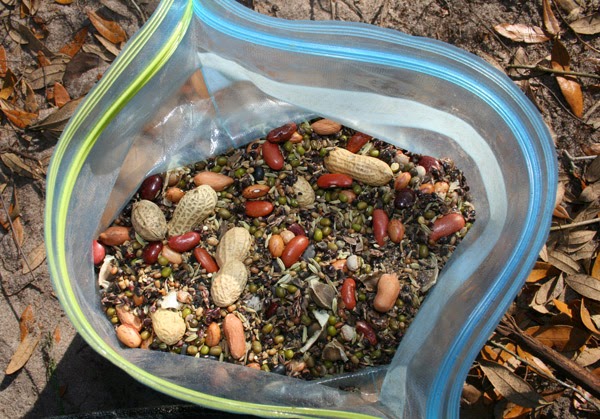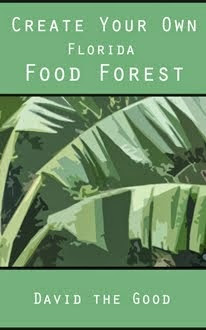KS needs some input on irrigation in the sandy soil of Northeast Florida:
“Hey David! I sent you an email a while ago and I absolutely love your blog. I’ve bought many of your books and they have been immensely helpful for me.
I live down a dirt road in a backwater town called ________ here in Northeast Florida. It’s nice and quiet which is perfect for a hermit like me. I have a one acre plot that is thriving with all sorts of plant, bug and animal life, I have yet to make any major steps but I am working on designing every square inch of it into a permaculture farm/garden. I have been working on identifying some plants around my yard and I’ve already found many edible species including cats ear, stinging nettle, dandelion, pennywort and tons of wild blackberry thimbles that produce deliciously tart blackberries in the warmer seasons. All of these are growing rampant without me doing anything. I even have prickly pear cacti.
I have a few questions that maybe you have dealt with in your gardening and permaculture adventures. The first one is about irrigation. I have several pine trees on my property and I plan on propagating them to grow more throughout my yard. I hoping to be self sufficient in this way by using the constant stream of pine needles as mulch. This way I don’t need to go out of my way to buy hay or wood chips, and I can know for sure that it’s not treated with dangerous chemicals. I had some initial worries about the pine needles increasing the acidity of the soil, but after researching I saw that as long as you use it as a mulch and don’t work it into the soil it should not increase the acidity by much if any at all. I’m hoping to build some food forests interspersed with annual hugelkultur and Ruth stout beds. I’ve seen some people talk about drip irrigation and build these cool PVC pipe set ups that spray water on a schedule. I live on a relatively flat landscape with barely any sort of contour, so swales may not work too well, I’m not sure. I’m planning on building a pond or two but my question is, how can I handle irrigation in a mostly natural way, especially for the initial few years when the trees I plant will still be young and need more water? I’m already planning on deep mulching, do you have any other suggestions to ensure my plants get enough water without building these grand irrigation systems?
Yes, the irrigation is important. Because you have cactus and pines, the ground is almost certainly sugar sand. It drinks water like crazy. I am not a fan of drip irrigation, especially in Florida. It may be more efficient, but the set up time is a pain and the constant maintenance is a real pain. Squirrels will sometimes bite the lines as well. My favorite method is to put up stand pipes with Rainbird sprinklers (or an equivalent) on top over the areas that need the most water. I did this in my annual gardens and nursery. It spreads the water all over. Sometimes in sand the irrigation from drip pipes will go almost straight down so some plants do well but those farther from the pipes do not. For the trees, I would plant in fall or winter and water them in, then mulch heavily and water once a week later on, soaking them well. I dragged a hose around, which took a lot of time, but was only needed for the first year.
My next question is about septic tanks and drain fields. There’s a drain field right in front of my house. I know that growing food or building any sort of raised bed would be a bad idea for that. I’ve been debating what I could plant or grow there that could be of some use to me. I was perhaps thinking a flower garden for beauty and attracting pollinators or insects, or let it grow with weeds and grass that I can them collect and use to mulch and compost. Do you think any of these ideas are good, and do you have any suggestions for this as well?”
I grew grapes right over my drainfield. They did well and weren’t a problem. Planting trees over it is a bad idea but I wouldn’t worry about most everything else. If you’re concerned about chemicals going down the drains, you should just throw around a lot of wildflower seeds and other useful plants and let it be a natural area – or just let the native weeds grow, giving predator species a good place to live, along with providing food for pollinators.
I made big epic seed mixtures and threw them around open patches. Mixes like this:

It is good that you’re already identifying the useful and edible species. You might simply cut pathways through the brush and maintain them with a weedeater, saving the useful plants and giving yourself easy access.
Swales in flat, Florida sandy areas are probably a no-go. I never bothered.
One thing you need to consider is that many species might not like that scrubby land all that much. Here are some ideas that might help you pick easy ones for your area. I’m not sure if you have palmettos or not, but they’re a common understory for pine.
Keep mulching like crazy, and grow plants for mulch, like Tithonia diversifolia and nitrogen fixers. Foliar feeding also works better in sand than does trying to get compost on everything. The soil just eats compost right up.
Good luck and write any time.


